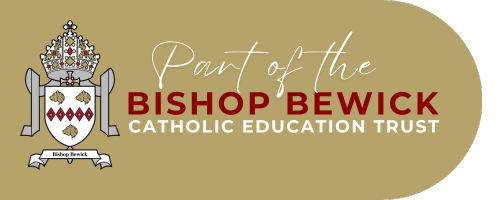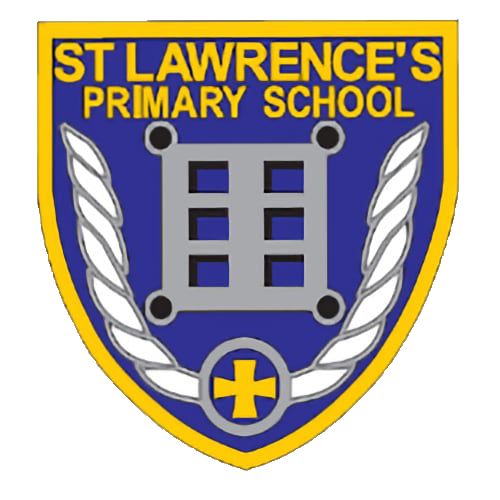
ENGLISH
ENGLISH
INTENT:
READING:
At St Lawrence’s, we value reading as a key life skill and are fully committed to enabling our children to become competent and life-long readers. We place reading and books at the core of our whole curriculum, recognising the important role it plays in extending vocabulary and developing comprehension skills both in Literacy and across other subjects. For this reason, our intent is to increase our children’s access to high quality texts, improve vocabulary, challenge children to become more confident, keen and capable readers but most of all – promote greater enjoyment of books! We recognise that these elements are all intertwined; each relies on the other if our children are to become life-long readers.
Our school serves an area of extreme deprivation. The IDACI index places the local community at the 252nd poorest ward out of 32,000 nationwide (bottom 0.03%). There are 30 different languages spoken within our school and the proportion of pupils who speak English as an additional language is above average. The proportion of pupils who are known to be eligible for support from the pupil premium and those who have special educational needs, is also well above the national average.
We are aware that access to books and literature is limited in our local community. Children need to read a lot of books to become fluent readers. With the closure of local libraries, access to books and literature is limited in our local area. This is a gap we need to fill in school.
These challenges underpin our rigorous and robust approach to reading. Without fluency in eading, our children will struggle to access a wider curriculum. As research shows that there is a strong relationship between children’s attainment and a school’s reading culture, it is essential that our structured approach, aims to overcome these barriers and enable our children to move on from our school, as successful and competent readers.
WRITING:
At St Lawrence’s, we value writing as a key life skill and are fully committed to enabling our children to become competent and confident writers. We teach a ‘text based’ English Curriculum from Reception to Year 6. We use a combination of high-quality texts and real-life experiences for pupils to base their writing on. Our writing curriculum is inextricably linked with our reading curriculum and class texts (See Whole School Reading Spine) but also includes many opportunities for children to write about real-life experiences. Considering that our school serves an area of extreme deprivation, experiences are limited and therefore we allocate a large proportion of our funding to facilitate these and improve vocabulary and writing.
As a school, we are still feeling the impact of the COVID pandemic and lockdowns. We have found that writing has felt the greatest impact as pupils have found it hard to develop automaticity in the basic skills which underpin writing. We therefore place a great emphasis on developing not just writing skills, but spelling, punctuation and grammar, and handwriting.
IMPLEMENTATION:
READING:
There are five cornerstones to reading:
Phonemic awareness (ability to hear sounds)
Phonics (segmentation and decoding)
Fluency (reading easily and accurately with expression)
Vocabulary
Comprehension
We have structured plans in place to teach each aspect throughout the school.
The routines and structures which we have in place to develop reading throughout school include:
Daily phonics lessons for pupils in Reception and KS1
Reactive daily intervention phonics lessons for pupils in Reception and KS1
Twice weekly targeted guided reading lessons for pupils in Reception and KS1
Weekly phonics intervention sessions for pupils in KS2 who did not pass the phonics screen check
Weekly silent reading and class reading in each class
Twice weekly reading lessons for all classes on KS2, each with a different focus
Reading books which are sent home weekly in KS1 and EYFS, and daily in KS2 matched to pupil ability
Designated times within the weekly timetable for class teachers to hear pupils in their class read
Access to a comprehensive school library for pupils to choose their own book to read to develop a love of reading.
A reading tree display in the library to share pupil book recommendations and share new vocabulary learnt.
WRITING:
Following a build-up of skills taught throughout our daily English lessons, children complete a piece of extended writing, usually on a two-weekly cycle. We cover a variety of different genres across school – narrative, recount, explanation, discussion, instructions, biography, character and setting descriptions, poetry etc.
We analyse ‘good examples’ of a similar piece of writing to discuss/model with children, before working together on planning frames to support children with the structure of their writing. We use Success Criteria so children know exactly what they have to achieve in each piece. We plan smaller working groups for children who need extra support and to extend children working at greater depth.
We spread out the writing process over a series of lessons, allowing pupils to edit and improve their writing. In line with our Marking and Feedback policy, our writing and re-drafting process allows teachers to give a clear structure to help pupils become independent proof-readers.
IMPACT:
READING:
The impact that reading has on pupils can be hard to measure as we are trying to establish a culture of reading across the whole school which inspires a love of reading. We do however have statutory assessments which can show us how our children have performed in EYFS and end of key stage reading tests.
WRITING:
Every term, children complete an independent piece of Writing. We show children the ‘marking criteria’ and discuss what is expected of them. This writing is then assessed against end of year expectations for that particular year group. These independent pieces of writing help teachers to make the decision about whether pupils are working below, within or exceeding age-related expectations.
Further information and data are included in the documents linked below.


